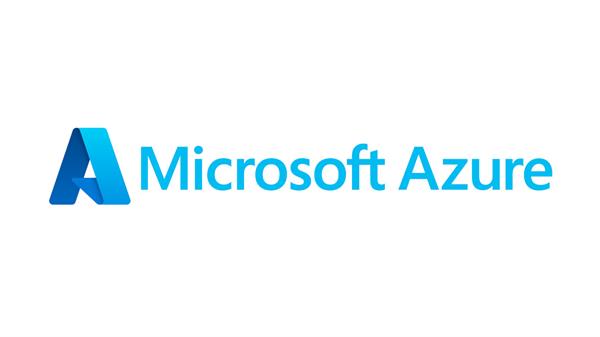From Zero to Hero: A Beginner's Guide to Conquering Azure Cosmos DB
Azure Cosmos DB is a powerful NoSQL database service offered by Microsoft that provides unmatched global distribution, guaranteed latency, and automatic scalability. Whether you're a seasoned developer or just starting your cloud journey, this comprehensive guide will equip you with the knowledge to conquer Azure Cosmos DB.
What is NoSQL?
Traditional relational databases, like SQL Server, store data in rigid table structures with predefined schemas. NoSQL databases, on the other hand, offer more flexibility. They handle data in various formats, including documents, key-value pairs, and graphs, making them ideal for modern applications that require agility and scale.
Why Azure Cosmos DB?
Several factors make Azure Cosmos DB a compelling choice for developers:
- Global Distribution: Azure Cosmos DB replicates your data across geographically distributed regions, ensuring low latency and high availability for geographically dispersed users.
- Guaranteed Latency: Unlike traditional databases that struggle with increasing data volumes, Azure Cosmos DB offers consistent performance with predictable sub-millisecond response times.
- Automatic Scalability: Azure Cosmos DB removes the burden of manual scaling. It automatically scales storage and throughput based on your application's needs, ensuring your database can handle ever-growing data volumes.
- Multiple APIs: Azure Cosmos DB supports various APIs, including SQL, MongoDB, Cassandra, and Gremlin, allowing you to choose the API that best suits your data model and development expertise.
- Rich Developer Experience: Azure Cosmos DB integrates seamlessly with various programming languages and frameworks, offering a smooth development experience.
Getting Started with Azure Cosmos DB
Conquering Azure Cosmos DB is easier than you think. Here's a step-by-step guide to get you started:
-
Create an Azure Account: If you don't already have one, sign up for a free Azure account to explore Azure Cosmos DB and other cloud services.
-
Create a Cosmos DB Account: Within your Azure portal, navigate to the Cosmos DB service and create a new account. Choose a unique name, resource group, location (consider your target audience's geographical spread), and API (e.g., SQL API for a familiar querying experience).
-
Create a Database: Once your Cosmos DB account is set up, create a database within it. This database will hold your application's data collection.
-
Create a Container: A container is essentially a table in Cosmos DB. It holds your data and defines the structure (schema) of your data items (documents). Here, you can define the partition key, a critical aspect for efficient data retrieval in Cosmos DB.
Core Concepts Explained
-
Partition Key: The partition key is an essential concept in Cosmos DB. It's a mandatory property in each of your data items that determines how data is distributed across Cosmos DB's storage units. Choosing the right partition key ensures efficient data retrieval and query performance.
-
Scalability: Azure Cosmos DB offers elastic scalability. You can easily adjust throughput (think of it as the number of operations your database can handle per second) to meet your application's demands. This eliminates the need to provision fixed resources upfront, saving you time and cost.
-
Consistency Models: Cosmos DB provides different consistency models, allowing you to strike a balance between data availability and consistency depending on your application's requirements. Strong consistency ensures data consistency across all replicas, while eventual consistency offers faster writes with eventual data synchronization across regions.
Conquering Cosmos DB with Queries
Azure Cosmos DB supports a rich query language specific to your chosen API. For instance, the SQL API utilizes a familiar SQL-like syntax for querying data. You can leverage features like filtering, sorting, aggregation, and indexing to efficiently retrieve the data you need.
Advanced Topics for Aspiring Heroes
As you conquer the basics, delve into more advanced Cosmos DB features:
-
Change Feed: The change feed allows you to capture data modifications (inserts, updates, deletes) in real time. This is valuable for building reactive applications that need to respond to data changes instantly.
-
Server-Side Scripts: Azure Cosmos DB supports server-side JavaScript functions that you can trigger pre or post-data modification. These functions enable you to perform custom logic on the server side, reducing data transfer and enhancing performance.
-
Graph API: For applications dealing with interconnected data, the Graph API empowers you to model and query relationships between data items. This is particularly useful for social networking platforms, recommendation systems, and knowledge graphs.
-
Monitoring and Analytics: Azure Cosmos DB provides comprehensive monitoring and analytics capabilities. You can track key metrics like throughput, latency, and storage consumption to gain insights into your database's performance and optimize resource allocation.
Conclusion: Your Azure Cosmos DB Mastery Awaits
By now, you're well on your way to conquering Azure Cosmos DB! This powerful NoSQL database offers unmatched scalability, performance, and global distribution, making it a perfect choice for modern cloud applications. Remember, the journey to mastery is an ongoing process. Experiment with different features, explore advanced functionalities and leverage Microsoft's rich documentation and learning resources to solidify your expertise. With dedication and practice, you'll be a true Azure Cosmos DB hero in no time!





